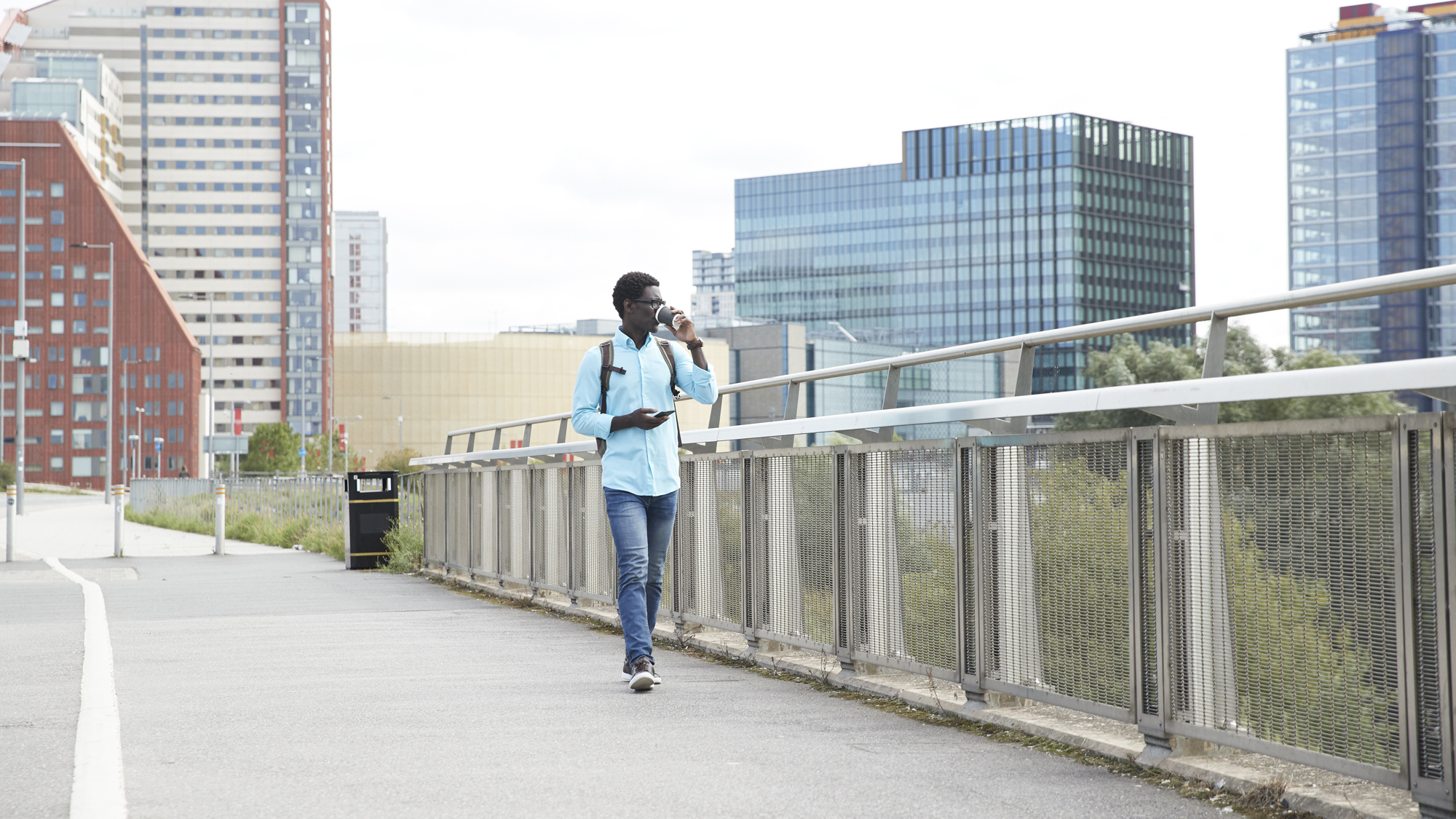30-day walking challenge: one month to increase your steps, improve your health
This exclusive walking challenge helps you gradually and sustainably improve your fitness


Taking up a 30-day walking challenge is a great way to stay active and gradually increase your step tally over several weeks. Walking is a low-impact way to move your body, improve your health, and protect your mind, and it doesn't take long to make it a regular habit.
The benefits of walking include better joint health, improved wellbeing, and increased metabolism, raising the amount of energy you burn throughout the day. Whatever your fitness goals, this 30-day walking challenge will help you reach your target in a sustainable, achievable way.
This routine comes from Joanna Hall, an MSc in Sports Science and the creator of the WalkActive program. As you'll be aiming for a certain number of steps each day, it's worth picking up one of the best fitness trackers to help monitor your progress over the month-long walking challenge.
30-day walking challenge: how to get started
Our 30-day walking challenge is best suited to beginners as a way to supplement your daily movement, with three levels to choose from. It's a great way to work towards making a habit of this low-impact activity. Although many people aim for 10,000 daily steps, how many steps you should take a day depends on your fitness goals.
It's all about fitting extra activity into your busy day, using walking to lose weight, up your daily activity levels, and gently maintain muscle over your entire body. And the good news is that it’s super simple!
The challenge has three different levels; which one you take on will depend on your current activity levels. Before you start the challenge, use your fitness tracker to record the number of steps you take for three consecutive days, then divide the total by three.
- If your daily average is less than 5,000, opt for the Beginner Level
- If your daily average is between 5,000 and 7,500, go for the Intermediate Level
- If your daily average is 7,500 or more, choose the Advanced Level
Once you've established which level is suitable for you, you'll then follow the daily and weekly targets set out below. If you find that your level is too easy, switch to a more advanced one—the key thing is the consistency of your efforts.
Start your week with achievable workout ideas, health tips and wellbeing advice in your inbox.
Do the daily walks in increments and the two additional 'booster' weekly walks when you can fit them in (we suggest the weekend, but find the times that work for you).
30-day walking challenge plan
Days 1-7
- Beginner: 5,000 steps daily
- Intermediate: 7,000 steps daily
- Advanced: 7,500 steps daily
Days 8-14
- Beginner: 5,550 steps daily
- Intermediate: 7,500 steps daily
- Advanced: 8,000 steps daily
Days 15-22
- Beginner: 6,000 steps daily
- Intermediate: 8,000 steps daily
- Advanced: 9,000 steps daily
Days 23-30
- Beginner: 6,500 steps daily
- Intermediate: 8,500 steps daily
- Advanced: 10,000 steps daily
Additional 'booster' walks
Days 1-7
- Beginner: An extra 1,200-1,500 steps twice a week
- Intermediate: An extra 1,500 steps twice a week
- Advanced: An extra 1,700 steps twice a week
Days 8-14
- Beginner: 1,500-1,800 steps twice a week
- Intermediate: An extra 1,700 steps twice a week
- Advanced: An extra 1,800 steps twice a week
Days 15-22
- Beginner: An extra 1,800 steps twice a week
- Intermediate: An extra 2,000 steps twice a week
- Advanced: An extra 2,500 steps twice a week
Days 23-30
- Beginner: An extra 2,000 steps twice a week
- Intermediate: An extra 2,500 steps twice a week
- Advanced: An extra 3,000 steps twice a week
30-day walking challenge tips
The way you walk can make a big difference to how you feel during your time outside and can boost the effects of some time outside. You can make small adjustments to your posture that'll make a big impact.
- Neck: Think about the distance between your ear lobes and shoulders—holding your head up improves upper back mobility and stops hunched shoulders.
- Arms: Think flowing pendulum—no tense, power walking arms.
- Hips: Lift your abdominals in and up to flatten your stomach and work your core.
- Feet: Try to have a soft roll through the whole foot, from heel pad to toes. Getting this right will lift your bottom and streamline your thighs.
If you find that it's difficult to stay motivated or make walking a regular part of your routine, consider sharing the challenge with friends or coworkers. You could either ask them to make you accountable, or get them in on the challenge too.
If you miss your target one day, don’t worry—you can be flexible on days when you're tight on time or finding it hard to hit your steps. To get the most from the walking challenge, aim to hit the total weekly target.

James is a London-based journalist and Fitness Editor at Fit&Well. He has over five years experience in fitness tech, including time spent as the Buyer’s Guide Editor and Staff Writer at technology publication MakeUseOf. In 2014 he was diagnosed with a chronic health condition, which spurred his interest in health, fitness, and lifestyle management.
In the years since, he has become a devoted meditator, experimented with workout styles and exercises, and used various gadgets to monitor his health. In recent times, James has been absorbed by the intersection between mental health, fitness, sustainability, and environmentalism. When not concerning himself with health and technology, James can be found excitedly checking out each week’s New Music Friday releases.